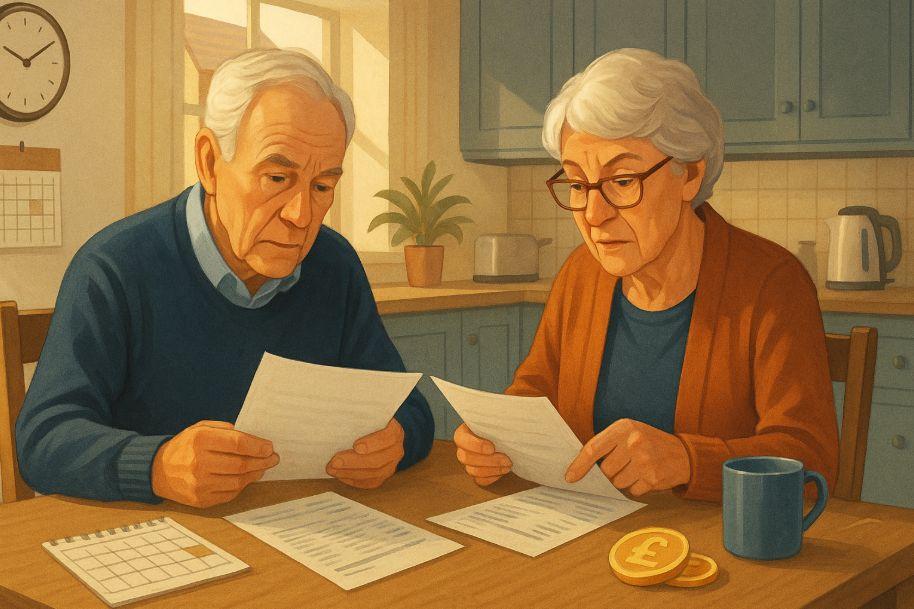As retirement approaches, one of the most common questions people ask is: “Is State Pension paid weekly or monthly in the UK?” For many individuals, the State Pension is the primary source of income in later life. Understanding how it’s paid whether weekly, monthly, or otherwise is essential for budgeting, planning bills, and managing daily expenses.
This comprehensive guide explains how the UK State Pension payment system works, when and how payments are made, and what influences the payment schedule for retirees.
What Is the UK State Pension?
 The UK State Pension is a regular payment provided by the government to those who reach State Pension age and have made enough National Insurance (NI) contributions throughout their working life. It is administered by the Department for Work and Pensions (DWP) and serves as the foundation of retirement income for most UK citizens.
The UK State Pension is a regular payment provided by the government to those who reach State Pension age and have made enough National Insurance (NI) contributions throughout their working life. It is administered by the Department for Work and Pensions (DWP) and serves as the foundation of retirement income for most UK citizens.
There are two types of State Pension in the UK:
- Basic State Pension: For individuals who reached the State Pension age before 6 April 2016.
- New State Pension: For those reaching State Pension age on or after 6 April 2016.
To qualify for the new State Pension, you typically need at least 10 qualifying years of National Insurance contributions. To receive the full new State Pension, you need 35 qualifying years. This contribution history determines how much you’ll receive.
As of the 2025/26 tax year, the full new State Pension is £221.20 per week, which is paid in arrears meaning you’re paid for the previous period, not in advance.
The State Pension is a contributory benefit, not means-tested, so eligibility is based purely on your contribution record rather than your income or assets.
How Often Is the UK State Pension Paid?
The UK State Pension is paid every four weeks, not weekly or monthly. This applies to all new claimants under the current pension system. The payment is made in arrears, covering the previous four weeks of entitlement.
This four-week payment cycle has become the standard in recent years. In the past, especially when pensions were collected in person at post offices using pension order books, some recipients could opt for weekly payments. However, with the transition to direct bank payments and the digitalisation of government services, the system has been streamlined to a uniform four-weekly schedule.
It’s important to understand that this four-weekly payment cycle differs slightly from a monthly cycle. Since some months have more than four weeks, the actual payment date can shift slightly over time, which can sometimes confuse those expecting a consistent monthly date.
Which Day Will You Receive Your State Pension?
While the payment frequency is every four weeks, the exact day of the week your pension is paid depends on your National Insurance (NI) number. Specifically, the last two digits of your NI number determine your payment day.
Here’s how the schedule breaks down:
| Last 2 Digits of NI Number | Payment Day |
| 00 to 19 | Monday |
| 20 to 39 | Tuesday |
| 40 to 59 | Wednesday |
| 60 to 79 | Thursday |
| 80 to 99 | Friday |
For example, if your NI number ends in 65, your State Pension will be paid on a Thursday every four weeks. This system helps the DWP manage the volume of payments efficiently by spreading them across the week.
If your payment day falls on a bank holiday, the payment is typically made on the last working day before the holiday to ensure timely access to funds.
How Are State Pension Payments Made?
 Payments are made via direct deposit into your nominated:
Payments are made via direct deposit into your nominated:
- Bank account
- Building society account
- Credit union account
This method is fast, secure, and reliable. Unlike older systems where pensions were collected in cash from post offices, today’s digital payment infrastructure reduces the risk of loss or delay and allows for better record keeping.
Those who do not have access to a bank account may be eligible for an alternative payment method. However, these situations are rare and are generally considered on a case-by-case basis. The DWP strongly encourages all recipients to use a standard UK bank account for receiving pension payments.
Can You Choose to Be Paid Weekly or Monthly?
Currently, new State Pension claimants do not have the option to choose between weekly or monthly payments. All new payments are made every four weeks. This policy is standard across the UK and is designed to make the process more consistent and easier to administer.
However, some individuals who started receiving their State Pension many years ago may still be on a weekly payment schedule. These recipients often began receiving pensions when order books were the norm, and they opted to continue receiving payments weekly even after transitioning to digital banking.
These legacy weekly payments are being gradually phased out and are not available for new claimants. For everyone else, the four-week cycle is mandatory.
Have There Been Any Recent Changes to State Pension Payments?
While the frequency of State Pension payments has remained stable, there have been other important changes introduced by the DWP:
1. Increase in Pension Amounts: Under the triple lock system, the State Pension increases each year by the highest of:
- Inflation (CPI)
- Average earnings growth
- 2.5%
For the 2025/26 financial year, the full new State Pension increased to £221.20 per week to account for inflation and cost of living pressures.
2. Changes to State Pension Age: The State Pension age has been rising and is currently set at 66. It will rise to 67 between 2026 and 2028 and may go higher in the future depending on life expectancy.
3. Digital Access and Management: The government has expanded digital access to pension services. You can now view your State Pension forecast, payment history, and update details through your personal tax account on the gov.uk website.
How Can You Manage a Four-Weekly Pension Payment?
 Receiving income every four weeks instead of every week or calendar month requires a shift in budgeting. Here are a few considerations:
Receiving income every four weeks instead of every week or calendar month requires a shift in budgeting. Here are a few considerations:
- Since you’ll receive 13 payments per year (as opposed to 12 monthly payments), some months may not have a payment at all.
- Planning ahead for months without a payment ensures you can still meet your regular expenses like rent, utilities, and groceries.
- You may find it helpful to track your pension payments on a calendar, so you know exactly when to expect the next one.
- Setting up direct debits or standing orders to match your pension arrival date can make monthly budgeting smoother.
You could also speak to a financial adviser if you have multiple income streams, such as personal pensions, to align them in a way that provides consistent income.
What Are the Key Facts About the State Pension Payment Schedule?
Here’s a summary of everything you need to know about State Pension payment frequency and structure:
| Detail | Explanation |
| Payment Frequency | Every 4 weeks |
| Payment Type | Paid in arrears |
| Payment Day | Based on National Insurance number |
| Payment Method | Bank or building society deposit |
| Flexibility in Frequency | Not available for new claims |
| Weekly Payments Still Available? | Only for legacy claimants |
| Payment Managed By | Department for Work and Pensions (DWP) |
| Current Weekly Rate (2025/26) | £221.20 |
Conclusion
The UK State Pension is paid every four weeks, not weekly or monthly. Although weekly payments still exist for a small number of long-standing recipients, this is no longer an option for new claimants. The exact day of payment is determined by the last two digits of your National Insurance number, and payments are made via direct deposit into your bank or building society account.
Understanding this system is essential to managing your retirement income effectively. By knowing when and how your pension will be paid, you can budget better and make informed financial decisions as you transition into retirement.
FAQs About State Pension Payments in the UK
Can new pensioners ask for weekly payments?
No. Weekly payment options are no longer offered to new claimants. All new recipients are paid every four weeks by default.
What should I do if I don’t receive my State Pension on the expected date?
First, check with your bank. If the funds are not there, contact the Pension Service via gov.uk or by phone to investigate the delay.
What happens if my payment date falls on a bank holiday?
In such cases, your pension is typically paid on the last working day before the holiday.
Is the State Pension subject to income tax?
Yes. The State Pension counts as taxable income, although tax is not deducted at source. You may need to pay tax if your total income exceeds the personal allowance.
Can I update the account my pension is paid into?
Yes. You can change your bank or building society details online or by contacting the Pension Service.
How much will I receive if I’m eligible for the full new State Pension?
In the 2025/26 tax year, the full new State Pension is £221.20 per week, which equates to approximately £884.80 every four weeks.
How do I check my State Pension schedule or forecast?
You can log into your Personal Tax Account on the gov.uk website to view your pension forecast, payment history, and next payment date.








